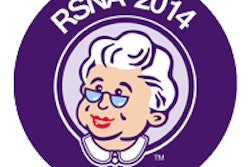In recent years, use of all breast imaging examinations has decreased, which could lead to a greater incidence of breast cancer in the future, according to research presented at the recent RSNA 2013 meeting in Chicago.
 Dr. Richard Sharpe Jr. from Thomas Jefferson University.
Dr. Richard Sharpe Jr. from Thomas Jefferson University.
"We wanted to investigate utilization trends in the Medicare population for screening and diagnostic mammography, breast ultrasound, and breast MRI," he said.
Sharpe and colleagues used data from 2005 to 2011 from the Medicare Part B Physician/Supplier Procedure Summary Master Files to determine the annual utilization rate of screening mammography, diagnostic mammography, breast MRI, and breast ultrasound.
The researchers determined procedure volume by tabulating global and professional component claims, and they calculated use rates per 1,000 women by dividing volume counts by the number of female Medicare beneficiaries for each year. Sharpe and colleagues also calculated and compared the compound annual growth rates (CAGRs) for two time periods: 2005 to 2009 and 2009 to 2011.
Sharpe's team found decreases after 2009 across all procedures, as indicated in the table below.
| Medicare breast imaging use by modality | |||||
| Imaging exam | Exams/1,000 beneficiaries, 2005 | Exams/1,000 beneficiaries, 2009 | CAGR change, 2005-2009 | Exams/1,000 beneficiaries, 2011 | CAGR change, 2009-2011 |
| Screening mammography | 312 | 323 | +0.9% | 311 | -1.9% |
| Diagnostic mammography | 96 | 92 | -1.3% | 86 | -3.4% |
| Breast MRI | 1.4 | 3.9 | +28.4% | 3.6 | -3.7% |
| Breast US | 37 | 43 | +4.3% | 45 | +1.7% |
"For all breast examinations, the rate of change from 2005 to 2009 compared to 2009 to 2011 decreased, either going from positive growth to a less positive rate, a positive to a negative rate, or from a negative to a more negative growth rate," Sharpe said. "Decreases in screening mammography, diagnostic mammography, and breast MR utilization in recent years may be in part attributable to changes in the USPSTF recommendations."
Why do these use pattern changes matter? Because they raise concerns about women having access to preventive breast care, Sharpe told AuntMinnie.com.
"A lot of radiologists are concerned that the improvements in breast cancer mortality attributable to screening mammography may be lost as a result of lower rates of utilization," he said. "Although we can't demonstrate direct causality between the rate decreases and the USPSTF recommendations, the timing of these decreases -- and across all breast imaging exams -- suggests that USPSTF's guidelines had an impact."
Lower utilization of breast imaging may mean that breast cancers will be diagnosed at later stages -- and mortality rates could increase, according to Sharpe.
"If we're doing less screening mammography, fewer diagnostic exams to work up suspicious findings, and less breast ultrasound and MRI, we may also be finding fewer early cancers," he said.




















